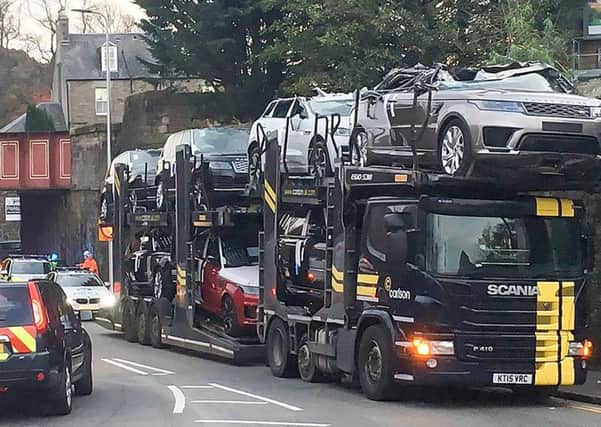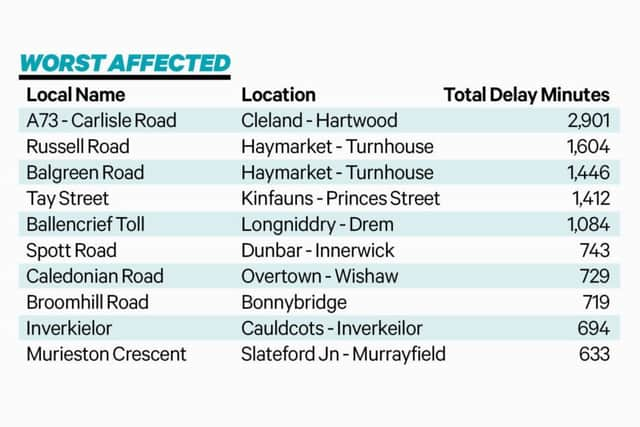Road bridge smashes to blame for train delays


The biggest victim, at Cleland in North Lanarkshire, has been struck 50 times, causing 48 hours of disruption, figures provided to Scotland on Sunday show.
Many such incidents involve lorries, but double-decker buses have also been culprits.
Advertisement
Hide AdAdvertisement
Hide AdThe next most hit – at Russell Road and Balgreen Road in western Edinburgh – have clocked up more than 40 hours of delays between them.


In an incident near Perth Station in October, brand-new Range Rovers and a Jaguar on a car transporter had their roofs torn off after its driver smashed into a bridge.
Network Rail chairman Sir Peter Hendy said the problem had become so bad it caused up to 2 per cent of all train delays.
Haulage industry sources said the problem was largely caused by drivers failing to spot warning signs or not knowing the height of their vehicle.
Advertisement
Hide AdAdvertisement
Hide AdA Network Rail spokesperson said: “Every year, bridge strikes cause significant disruption to our railway.
“Dealing with the issue not only delays rail passengers and road users caught up in an incident, but bridge strikes also divert resources that could be better used to invest in improving our infrastructure.
“Our bridges are clearly marked and bridge strikes could be easily avoided by the drivers involved.”
Robert Nisbet, regional director of the Rail Delivery Group, which represents the industry, said: “Bridge strikes impact the whole transport network and each one can delay trains by up to two hours.
Advertisement
Hide AdAdvertisement
Hide Ad“The rail industry does all it can to lower the impact for customers, including keeping them informed about delays, but drivers must also take responsibility to prevent this from happening and rail companies are providing guidance to logistics companies.”
The Road Haulage Association said drivers must take precautions.
Scotland policy director Martin Reid said: “It is absolutely incumbent on the driver to know the height of the vehicle and load they are carrying at all times, and this should be part of the daily checks each driver must undergo.
Virtually all our training courses for drivers and for managers cover this subject, as it has that level of importance.
Advertisement
Hide AdAdvertisement
Hide Ad“Our guidance documents and check sheets all highlight vehicle height and load height checks, but as with all walks of life, human error is possible at any stage in the process.”
Vehicles struck bridges in Motherwell and Cathcart in Glasgow last week, although those incidents caused little disruption.
Malcolm Bingham, head of road network management policy for the Freight Transport Association, said: “Highway authorities should ensure they provide well-signed road layouts at low bridges. Equally, it is important drivers know the height of their vehicle.
“We participate in the bridge strike prevention group, which looks to update guidance both to the industry and highway authorities.”